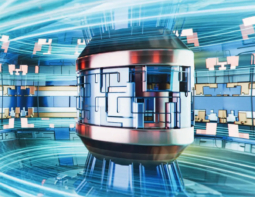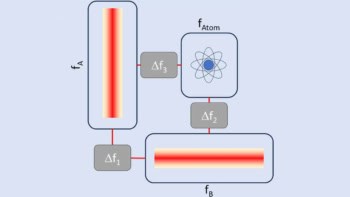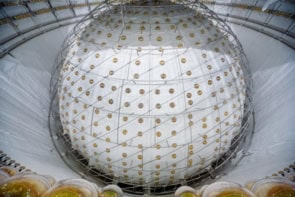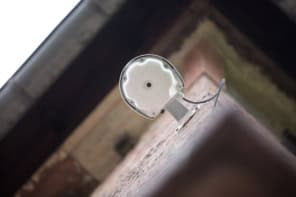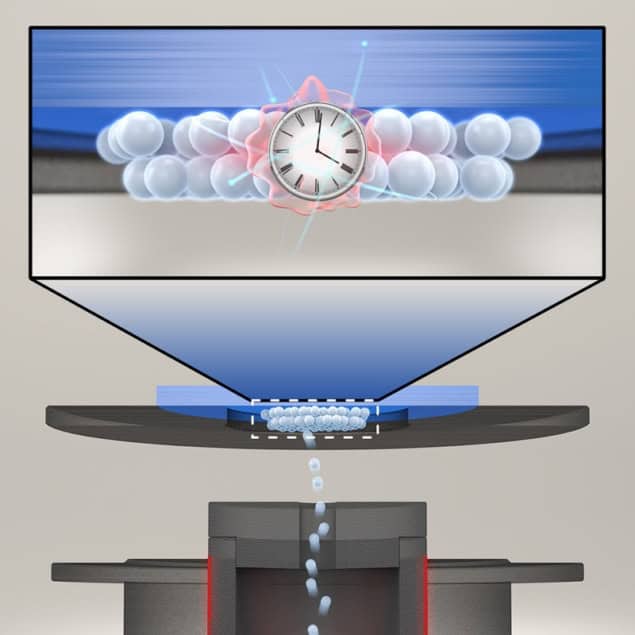
Physicists in the US have taken an important step towards a practical nuclear clock by showing that the physical vapour deposition (PVD) of thorium-229 could reduce the amount of this expensive and radioactive isotope needed to make a timekeeper. The research could usher in an era of robust and extremely accurate solid-state clocks that could be used in a wide range of commercial and scientific applications.
Today, the world’s most precise atomic clocks are the strontium optical lattice clocks created by Jun Ye’s group at JILA in Boulder, Colorado. These are accurate to within a second in the age of the universe. However, because these clocks use an atomic transition between electron energy levels, they can easily be disrupted by external electromagnetic fields. This means that the clocks must be operated in isolation in a stable lab environment. While other types of atomic clock are much more robust – some are deployed on satellites – they are no where near as accurate as optical lattice clocks.
Some physicists believe that transitions between energy levels in atomic nuclei could offer a way to make robust, portable clocks that deliver very high accuracy. As well as being very small and governed by the strong force, nuclei are shielded from external electromagnetic fields by their own electrons. And unlike optical atomic clocks, which use a very small number of delicately-trapped atoms or ions, many more nuclei can be embedded in a crystal without significantly affecting the clock transition. Such a crystal could be integrated on-chip to create highly robust and highly accurate solid-state timekeepers.
Sensitive to new physics
Nuclear clocks would also be much more sensitive to new physics beyond the Standard Model – allowing physicists to explore hypothetical concepts such as dark matter. “The nuclear energy scale is millions of electron volts; the atomic energy scale is electron volts; so the effects of new physics are also much stronger,” explains Victor Flambaum of Australia’s University of New South Wales.
Normally, a nuclear clock would require a laser that produces coherent gamma rays – something that does not exist. By exquisite good fortune, however, there is a single transition between the ground and excited states of one nucleus in which the potential energy changes due to the strong nuclear force and the electromagnetic interaction almost exactly cancel, leaving an energy difference of just 8.4 eV. This corresponds to vacuum ultraviolet light, which can be created by a laser.
That nucleus is thorium-229, but as Ye’s postgraduate student Chuankun Zhang explains, it is very expensive. “We bought about 700 µg for $85,000, and as I understand it the price has been going up”.
In September, Zhang and colleagues at JILA measured the frequency of the thorium-229 transition with unprecedented precision using their strontium-87 clock as a reference. They used thorium-doped calcium fluoride crystals. “Doping thorium into a different crystal creates a kind of defect in the crystal,” says Zhang. “The defects’ orientations are sort of random, which may introduce unwanted quenching or limit our ability to pick out specific atoms using, say, polarization of the light.”
Layers of thorium fluoride
In the new work, the researchers collaborated with colleagues in Eric Hudson’s group at University of California, Los Angeles and others to form layers of thorium fluoride between 30 nm and 100 nm thick on crystalline substrates such as magnesium fluoride. They used PVD, which is a well-established technique that evaporates a material from a hot crucible before condensing it onto a substrate. The resulting samples contained three orders of magnitude less thorium-229 than the crystals used in the September experiment, but had the comparable thorium atoms per unit area.

Excitation of thorium-229 brings a working nuclear clock closer
The JILA team sent the samples to Hudson’s lab for interrogation by a custom-built vacuum ultraviolet laser. Researchers led by Hudson’s student Richard Elwell observed clear signatures of the nuclear transition and found the lifetime of the excited state to be about four times shorter than observed in the crystal. While the discrepancy is not understood, the researchers say this might not be problematic in a clock.
More significant challenges lie in the surprisingly small fraction of thorium nuclei participating in the clock operation – with the measured signal about 1% of the expected value, according to Zhang. “There could be many reasons. One possibility is because the vapour deposition process isn’t controlled super well such that we have a lot of defect states that quench away the excited states.” Beyond this, he says, designing a mobile clock will entail miniaturizing the laser.
Flambaum, who was not involved in the research, says that it marks “a very significant technical advance,” in the quest to build a solid-state nuclear clock – something that he believes could be useful for sensing everything from oil to variations in the fine structure constant. “As a standard of frequency a solid state clock is not very good because it’s affected by the environment,” he says, “As soon as we know the frequency very accurately we will do it with [trapped] ions, but that has not been done yet.”
The research is described in Nature.
